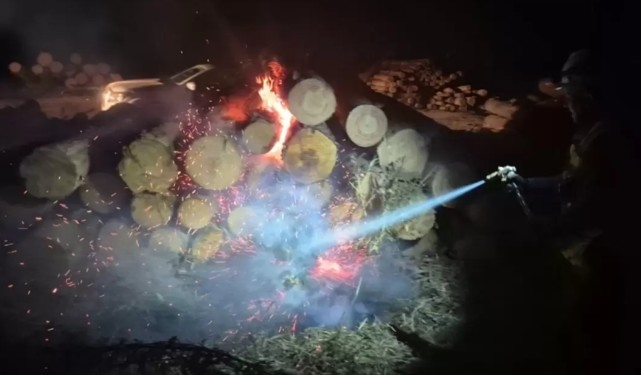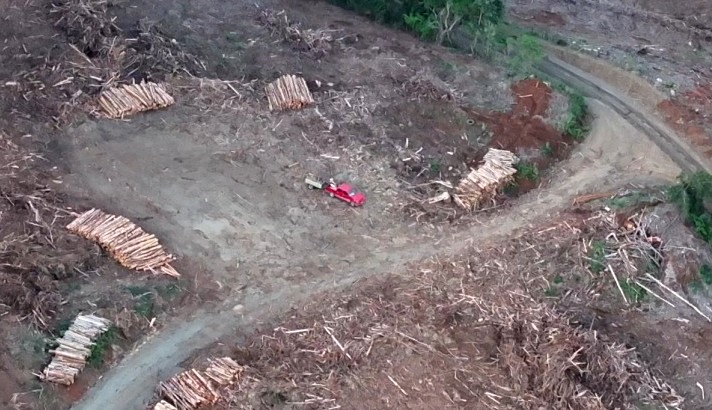Timber Guilds Aim to Match Nordic Countries Through Long-Term Plantations
The timber industry of the southern macro-zone, with the Biobío region and province as its epicenter and the country's capital, is immersed in a focused strategy to transform national construction, driven by the Biobío Madera program.
Víctor Sandoval, president of the Biobío Madera governance and also the regional head of PymeMad for Biobío and Ñuble, confirmed that this effort seeks to consolidate trust and technical development so that wood, currently used in about 20% of constructions, reaches the usage levels of the northern hemisphere, where it exceeds 80%.
Sandoval, who concludes his two-year term at the helm of the governance this week, emphasized that the main challenge of this ambitious goal is not technical but logistical and political: the drastic reduction in new forest plantations threatens the future operational capacity of SMEs, as the supply is not guaranteed within the next 20 years.
THE BIOBÍO MADERA PROGRAM
The development of the timber sector is structured under the Biobío Madera program, which serves as the "umbrella" encompassing collaboration among producing SMEs, construction companies, and the public sector. This program, active for three years, is part of the regional strategic plan and falls under Corfo's Transforma Program, both allocating resources to develop strategic industrial focuses.
Corfo Biobío has specifically identified timber and the forestry sector as a regional strategic axis. The goal is to develop the industry through modern construction methods. To this end, Biobío Madera works to promote the use and "proper use of wood in construction" by fostering public-private partnerships. The program is designed to strengthen SME wood-producing companies, primarily located in the southern macro-zone, especially in the Biobío province and region.
THE TRUST GAP
Víctor Sandoval assumed the governance leadership two years ago and is about to complete his term this week. By statutory provision, the governance leadership of Biobío Madera will be taken over by another institution.
One of the priorities of the sectoral work has been to change the cultural perception of the material and promote its technical advantages. Currently, the use of wood in Chile's construction industry stands at approximately 20%.
The joint effort of timber SMEs, construction firms, and large companies has focused on creating the necessary "context" and "environment" for wood to maintain the required properties and characteristics. The objective is to ensure "quality constructions with good finishes" and avoid post-sale issues. According to the president of PymeMad, the key is to "convey that well-worked wood is a noble material that provides quality solutions for various types of use."
RAW MATERIAL CHALLENGE
Although Biobío is recognized as the "Timber Capital of Chile," the long-term availability of supplies represents the most vulnerable point of the growth strategy. To address this supply crisis, the "Futuro Madera" network has been formed, bringing together nearly all key industry guilds, including PymeMad, the Chilean Wood Corporation, the Association of Forestry Contractors (Acoforag), HPOM, and the College of Forest Engineers.
The purpose of this guild collaboration is to develop conditions that "guarantee raw materials in the long term." The concern arises after the end of the decree that subsidized forest plantations, resulting in a drop of "practically 100%" in new plantations. This situation is considered "very bad for timber SMEs," as they historically relied almost entirely on the supply of pine and eucalyptus generated by small and medium-sized entrepreneurs dedicated to such plantations.
THE URGENCY OF A NATIONAL DECISION
The "Futuro Madera" network has maintained constant dialogue with the Government to seek support mechanisms, such as promoting subsidies and funding sources to revive new plantation work. Sandoval mentioned that "good news" has emerged in recent weeks and highlighted an initial project to work with new plantations in the Biobío region.
The guild leader emphasized the seriousness of the time window needed to reverse this situation: "We have to consider that plantations take 20 years to grow, therefore we have to wait 20 years from now for the results."
If decisive actions are not taken now, he concluded, there will be "no guarantee that in the future we, the timber SMEs, will have the supply to continue operating."
Source:La Tribuna

















